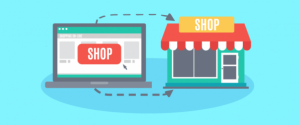So……you FINALLY have a kick-butt website that reflects your TRUE brand. It’s NOW your VIRTUAL Store-front. But, how do you turn that website traffic into FOOT traffic to your brick & mortar?
No matter how much traffic you get to your site, you have to come to the table with a sound strategy on how to convert them into paying customers.
No Conversions = No Sales
When Conversion Rate Optimization takes place, your visitors are far more likely to take action on your website. It involves anything that increases your chances of a website conversion.
Your marketing strategy’s end goal comes down to conversions. Without them, you’re doing all of this “marketing stuff” for nothing.
Luckily for you, there are a plethora of ways that you can optimize your conversion rates. It starts with your strategy.
3 Ways to Improve Your Conversion Rates
You have to be tactful in your approach to increasing your conversions. Through trial and error over the years, our team can attest to these tried-and-true methods for conversion rate optimization.
#1: The Marketing Lifecycle
Sales funnels are dead. Now, it’s all about the marketing lifecycle.
Sales funnels focus on the sale. Lifecycle marketing focuses on the customer. More specifically, a holistic outlook of the customer experience.
Like sales funnels, the marketing lifecycle is a visual depiction of your customer’s journey. The difference between the two? The point of focus.
It’s important to have a firm grasp of that. Each stage of the prospect’s lifecycle—from awareness to loyalty—requires its own different marketing strategy. Furthermore, each piece of the lifecycle puzzle should fit perfectly together to create a cohesive, holistic marketing strategy.
The first stage of the lifecycle begins with the first website visit—also known as the awareness stage. That’s your big chance to get your visitors hooked and capture their lead information.
These visitors move down to the interest stage once they’ve shared their contact info. This is a telling sign that they’re interested in your business, and still deciding whether they want to pledge their loyalty to you.
The desire stage follows thereafter. It typically doesn’t take very long for consumers to transition to this stage, especially when they’re pretty much sold. As you can probably already guess, this is the stage where the lead is closest to converting.
Then, there’s the conversion stage. This is your opportunity to go in for the close. The transition from prospect to client happens here.
BUT, the journey doesn’t end here. You may think that your job is done once you convert the prospect, but it’s not.
Retention is the next biggest goal, and you have to work twice as hard to earn a customer’s loyalty.
#2: Calls-to-Action
The quickest way to get a visitor to take action? Nothing says “book my services” better than a big, shiny call-to-action (CTA) button.
CTA’s are vital for your website. They are designed to lure the visitor into making a purchase, or in your case, scheduling a visit.
You’ll know a CTA button when you see one. It’s the clickable button on a website that typically reads, “Book an Appointment,” or “Contact Us.”
#3: A/B Testing
Split testing—another term for A/B testing—involves the performance analysis of one landing page over another.
This is a highly important aspect of the conversion rate optimization process. With split testing, you’ll have a better idea on how to optimize your landing page for higher conversion rates.
In reality, split testing never stops as long as your landing page is live. There’s always room for improvement where your marketing efforts are concerned, and your campaign materials are bound to evolve over time.
If your CTA’s aren’t strong enough to convert, it’s time to rethink your messaging. Enlist our team to add the magic touch to your landing page and CTA’s. Request a website audit to get the ball rolling.

 317-289-4965
317-289-4965